Malta
The island nation of Malta was one that was never particularly on my radar. After all, I’m not someone who gets much pleasure out of a beach holiday. Yet, as I was to find out, there is so much more to this tiny spec of land on the edge of Europe.
The Republic of Malta is located in the Mediterranean Sea just south of Italy and east of Tunisia in north Africa. At just 316km2, and with 493,000 residents calling the islands home, Malta is both the tenth smallest country by area and the fourth most densely populated sovereign state!
Malta itself is made up of three islands; Comino, Gozo and the largest of them, Malta. Thousands of tourists flock to the country each year for its warm climate and easy access to the sea. Yet, there are also plenty of activities for those who don’t plan to sit beside a pool all day or worship the sun.

The island is steeped in history. The land has been populated for thousands of years and is home to three UNESCO World Heritage sites; one of which is the entire capital city of Valletta; which is also the European Union’s smallest capital.
Malta’s ancient history dates as far back as 5,900BC. Over the centuries Malta has been occupied by vast quantities of different settlers and invaders. There is clear evidence of Greek, Roman and even Arabic influence on the architecture that remains present to this day.
Step forward to the 1800s and the British took ownership of Malta. However, unlike other locations around the world where the British have exerted their influence, Maltese and British relations remain on good terms.
Then in 1964, Malta gained its independence as a nation although choosing to retain Queen Elizabeth II as Queen of Malta and Head of State. All over the country there are still fond feelings towards the British monarch and UK visitors from locals. Overall, it makes for a very pleasant experience.
I booked the trip to Malta as a surprise holiday for my girlfriend (Holly) during mid-March. It was somewhere that we could explore at our own pace and also somewhere that had the added bonus that neither of us had been to.
On top of that, there were very few European countries that we could visit at that time of year that we would have a good chance of getting decent weather during our stay. My mind was made up, and Malta was our destination.
Average temperatures in Malta, during March, reach highs of almost 20°c and lows of around 10°c. There are also only around five days of rain. This, I felt, gave us a fighting chance of getting a great Maltese experience. Fortunately, luck proved to be on our side, as for the entire time we were in Malta you could probably count the number of rain clouds we saw in the sky on the thumbs of one hand.
One of the key aspects of Malta that really appealed to me was that of its small size. The beauty of it being so small is that you can travel from one side of the main island of Malta to the other in around an hour. And that’s with traffic!

So, what else should visitors know about Malta before travelling there. Firstly the currency. Malta is conveniently on the Euro. That means that it’s easy to get an idea of how much you’re spending. At the time of writing £1 gets you around 1.12 Euros. In terms of how expensive things are, Malta is – from my point of view – mid-range when it comes to how expensive it is.
Compared to some countries it is quite expensive but compared to others – such as those in Scandinavia – it is reasonable. It’s easy to get by on a modest amount of money per day, but you can also spend a lot of money if you’re so inclined (for example on a top meal out eating some of the best seafood you’ll ever experience).
Next thing to note is that if you are driving in Malta, then you’ll be pleased to know that they, like the UK, drive on the left-hand side of the road. It makes for an easier driving experience for those of us who are used to that way of getting around.
However, driving has its challenges. There are a lot of cars and a lot of small tight winding backstreets. Most cars seem to want to be in the same space your car is occupying which can be fun. Rush hours can also prove busy, but once you are outside the main areas, roads open up a bit, and this is further improved on Gozo.
My other note from driving in Malta was that parking around the country is free (with the exception of some car parks just outside Valletta). That’s not to say there are no rules whatsoever to follow. It is, however, quite simple and revolves around a colour-coding system.
White parking bays are what you are looking for as they are for everyone. Yellow paint means do not park. Green bays are for residents only all day (mostly applies to Valletta) and blue bays are residents only between 7am and 7pm (again mostly in Valletta). There are also places where there are no bays at all, which usually means you can just park there (although check for signposts before you do).
One thing you can feel comfortable with is the language requirements. While there is an official Maltese language – which comes from Latin and Arabic origins – English is a universally spoken offical second langauge. When it comes to European travel, it really does make a massive difference.
Finally, Malta is a very safe country and is regularly voted one of the safest European countries in the EU. You should still be vigilant, however, as crime does still occur. But as long as you keep your eye on your belongings, you should be safe to enjoy your time in this Mediterranean oasis without concern.
Getting there
Getting to Malta is a relatively straightforward experience. From London there are numerous flights going to Malta catering for a wide variety of budgets.
There remains only one airport on Malta which is located towards the south-east of the main island just outside the capital of Valletta in the Luqa / Gudja region of country.
It’s fair to say that Malta International Airport punches well above its weight. Each year over 7 million travellers pass through its gates in and out of the country. When you consider that just under 500,000 people call Malta home, you’ll appreciate how sizable that number is!
And it has great access to the UK as well. Flights to Malta can be taken from London airports including Stansted, Gatwick, Heathrow and Luton as well as from locations further north such as Leeds, Manchester and Liverpool.
From these airports you’ll be able to get flights on a variety of tour operators including Ryanair, Air Malta and Jet2. For our trip, however, Holly and I flew with Easyjet out of London Gatwick.
Flight times to Malta are still what I’d refer to as relatively quick. Despite its location on the cusp of Europe, average flight times from London are between three to three-and-a-half hours.
Taking off from London at around 7.30am on a cold March morning made the prospect of the warmer Maltese climate that bit more appealing.


What also made a three-night March sojourn to Malta appealing was that it avoids the pricier times of year to travel to this sun-swept island haven. For just £130.44 I managed to secure return flights for two people. Personally, I considered that to be a great bargain.
A downloaded book on the Kindle, a couple of magazines and a good podcast (My Dad Wrote A Porno anyone?) later, the wheels of our plane touched down on the island’s tarmac at around 11.45am (Malta are an hour ahead of the UK), ready for our Maltese adventures.
Where to stay
When planning a stay in Malta, the first thing I’d personally advise is that you stay outside of Valletta. The reason for this is that, of any place on the main island of Malta, this is the hardest to come and go from by car.
If you have a car, and are looking to avoid having to pay for parking – which can be around 3 Euros per hour – it is very tricky in the capital. On top of that, if you are staying in the centre, if can be hard to find a space anyway that’s near your accommodation. Also, it is often the busiest part of Malta, so with every part of the island accessible within an hour, why add an issue to your stay that can be avoided by sleeping elsewhere.
Across the entire country there are clear signs of development taking place. You don’t have to go far from the airport to notice new hotels and apartment blocks being built as Malta looks to continue attracting more tourists to its shores each year.
Finding accommodation in Malta is easy. There are hundreds of options to choose from and lots of hotels that look like they provide a good base for any Maltese stay. For this trip though, I wanted to find something special. Something that had a bit of character to it and I did so through AirBnB.
Based in Ħaż-Żabbar, in south-eastern Malta – just 15 minutes by car from the airport and 20 minutes from Valletta – the Ta Drinu character house caught my attention immediately.
This stunning property is located down a very quiet alley near a small town square (where there is easy access to free parking). From the outside, the walls and gate doors flatter to deceive.
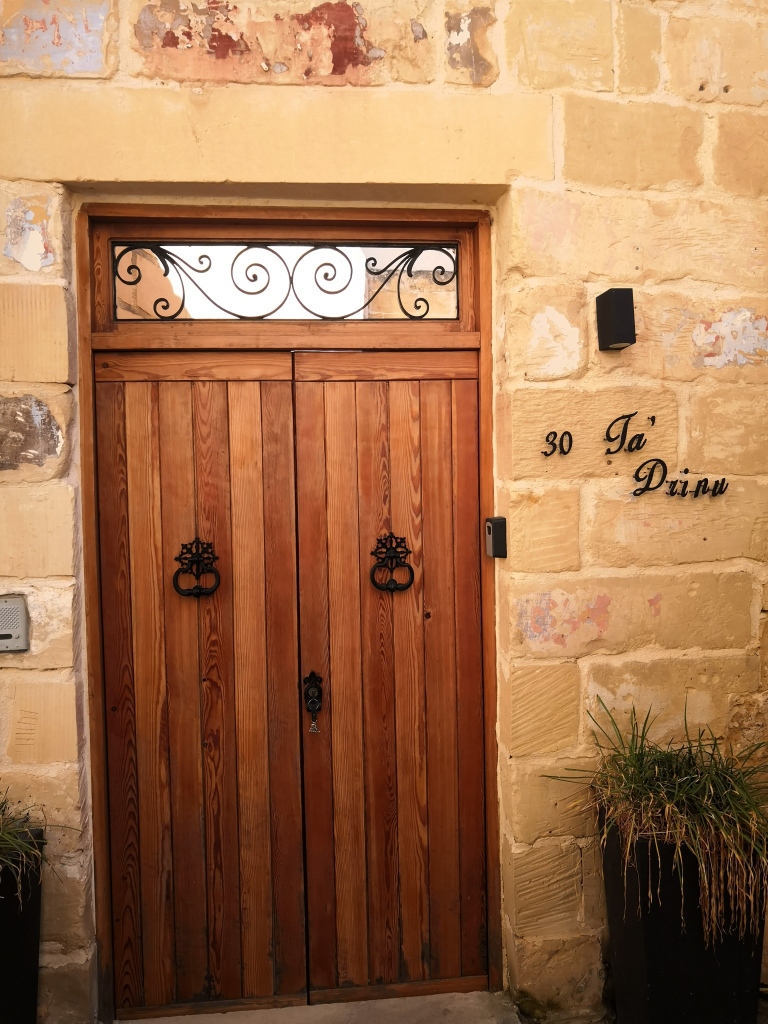



Built around 400 years ago, this stone house perfectly combines the old with the new. Entering the gates you’ll walk into a quaint courtyard with outside lighting and seating. From here though it’s still unclear just how much this house has to offer. I’ll try and do it justice but first I’ll explain more about your hosts.
When Holly and I arrived at the airport I messaged the host of our stay. A lovely lady named Mary Rose. Not only did she meet us at the airport, but she also directed us to the house by driving slowly while we followed in our new hire car. Once inside, we were then given a guided tour around the house and shown some of its amazing features.
Inside the living space, just to the right of the courtyard as you enter, there is a spacious, four-seater, indoor Jacuzzi just waiting to be turned on. Above the Jacuzzi there is a skylight glass roof that, on a clear night, allows you to watch the stars while soaking in the tub. Perfection.
Further into the room there is a large circular sofa (that can be turned into a double bed if four people are staying here) and flat-screen TV on the wall. All this is encompassed by the stunning curves of the arches making up the stonework ceiling.
You won’t fail to notice the animal theme of the room either. As you enter you’ll see a floor to ceiling elephant print on the far wall while also noticing a rather fetching large cat print rug on the cool-tiled floor.
In the far corner of the room there is also a small downstairs bathroom equip with shower and toilet.
Staying on this floor for a moment, to the left of the main entrance, you’ll be taken to a dining and kitchen area that has all the modern equipment anyone could need for a stay here. Entering here, I noticed a glass bottomed floor below the dining table. More about what that looks into in a bit.
One other thing to point out for the kitchen area is that there is also a wide selection of wines made available by the host (for a small fee per bottle which you pay when you leave by putting the money on the table for what you’ve drunk) that can make for a nice private drink at the end of a full day exploring.
Back to the house now, and in the main room, there are a set of stairs that lead up to the roof level. Here you’ll have access to a large outside area great for sunbathing and BBQs. It also leads you to the main bedroom which is actually a separate entity in itself.






Entering from roof level (also accessible from the outside by a stairway from the courtyard), the master bedroom is well laid out and allows for the morning sun to pour in when you open your blinds or the main doors. From here you’ll also have the pleasure of a shower room and upstairs toilet facilities so you don’t need to leave the room in the night.
For most properties you’d think that was more than enough. Well here there is one more surprise in store. From the courtyard at ground level, there is another door leading down a small, low, set of stairs. This leads to a games room below the dining room (where the glass floor is located). Here Holly and I enjoyed numerous games of table football (I think I won although she’ll say differently) and a game of darts. It really does top off a fantastic house and makes it such a great place to stay.
Aside from the stunning style of this house, it is also extremely cool given that it is made of stone. This means that – with the added help of air-conditioning – you’ll never be too hot in this house during a stay no matter how warm it is outside.
For this house you’d expect to pay a lot of money. And let’s be fair, this is far from a budget accommodation. For three nights in March, I paid £352.70 (around £118 a night). Prices since I have stayed here have increased however, and a three night stay now costs around £452 (around £150 a night).
Now while that may not sound cheap it is worth considering that for a hotel, where you may even pay more than this, you are not going to get even half the amount of room.
The experience of staying here though made every penny I spent booking Ta Drinu worthwhile.
Getting around
Malta is, as already mentioned, a very small island. Not so small that you can walk it though! There are good public transport services available in the form of buses – although this does mean you have to be aware of timetables and routes to avoid getting stuck – or, failing that, hiring a taxi. Also, there is no active train service on the island and hasn’t been one since 1931.
Your best bet, to give you total freedom of the island is to rent a car. We rented ours from Avis before we left the UK and we booked it through, the easy-to-use, Holiday Autos.
Avis provide a variety of sizes of car for most budgets, but driving on Malta and around a number of its small, winding, streets would prove difficult if you selected any car bigger than around the size of a Hyundai i10. Not only are the roads narrow but you often have to squeeze your car into a small roadside parking space. A big car here is both a waste of money and problem waiting to happen.
You can pick up your car directly from the airport after you come through immigration. There is a small, 24-hour, kiosk where you present your booking details. It’s going to sound obvious, but remember to bring with you your UK driving licence and a credit card as they will need both before allowing you to hire a car.
Once approved, you are then given the keys to your vehicle and you’re off outside to pick up your car from the nearby lot.


Amazingly, renting a car is incredibly cheap. For three days hire, I only paid £16.87 upfront. The only stipulation on this was that I picked up the car with a full tank of petrol and returned it with one also. Thankfully, there is a petrol station right outside the drop off point for the cars (great bit of business from someone) where you can top yourself up before handing in your keys at the end of your trip.
So while a car is great to get around on land, you do have the issue of how do you get to either Gozo or Comino to the north of Malta. For that you should use the Gozo Channel ferry
This roll-on/roll-off ferry service leaves from Cirkewwa in the northern tip of Malta (about an hours drive from Valletta) and takes around 30 minutes, maximum, to travel across the Gozo Channel to Mgarr in Gozo.
To get onboard you join the queue of cars and wait to be ushered onto the ferry. Once parked you can get out and stretch your legs, buy a quick snack and drink upstairs and take in the view as you cross the water.


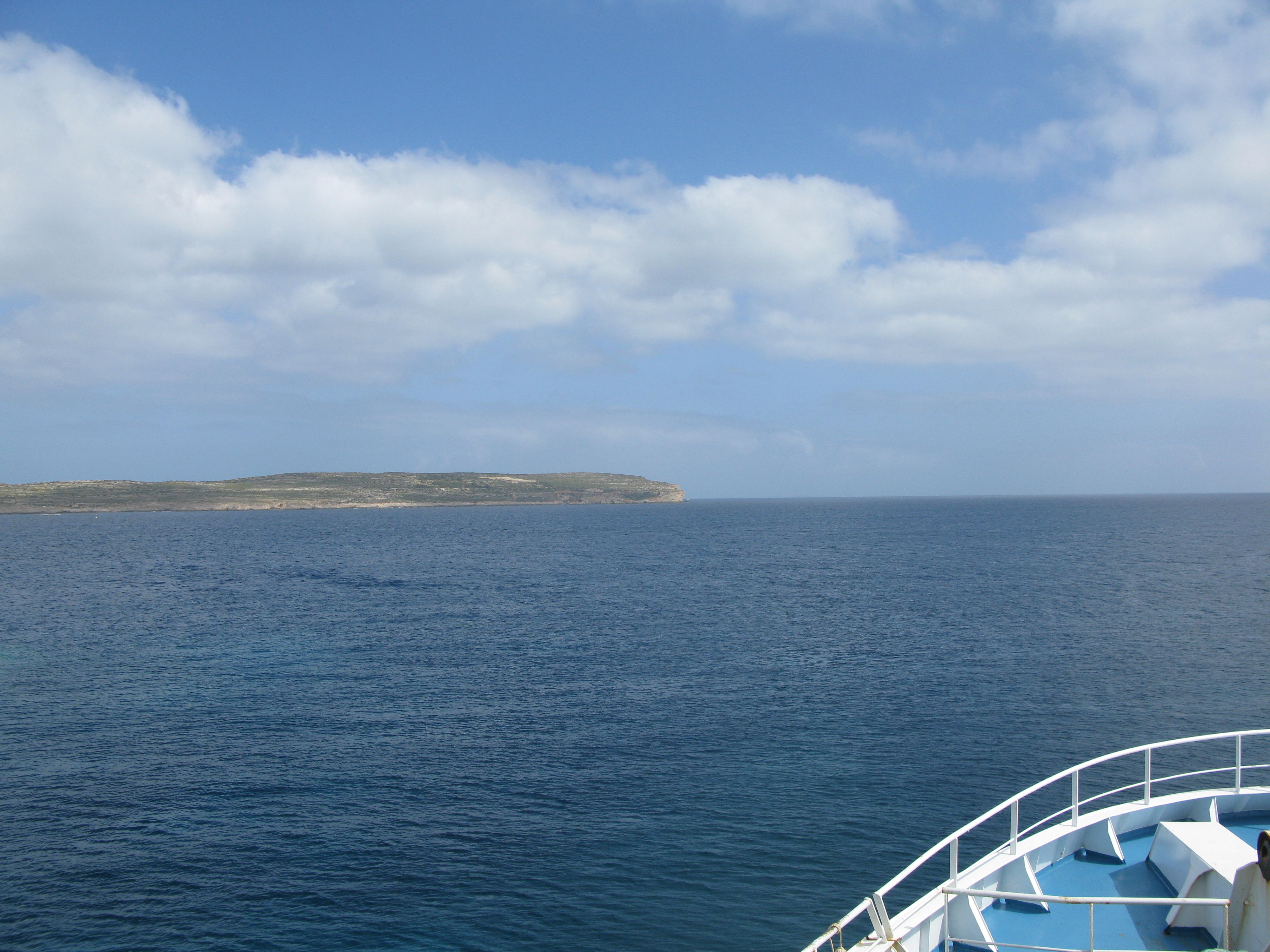
Ferries are extremely regular in both directions with ones leaving approximately every half hour to 45 minutes. A full timetable can be seen on the Gozo Ferries website.
Payment for this is cheap also. It costs 15.70 Euros for a car and a driver to cross and an additional 4.65 per passenger. You also only pay for the whole journey (e.g. Malta to Gozo and back to Malta) on the return to the mainland.
Top sites
No trip to Malta would be complete without a visit to the capital city of Valletta. At just 0.8 square kilometres, Valletta holds the title of being the smallest capital city within the European Union.
But don’t let its size deceive you. Inside the walled streets lies a treasure-trove of interesting sites and stunning views.
During our visit, the best piece of advice is to park outside the city in one of the (paid-for) nearby car parks. From there, we took the short walk over the road to enter via it’s main city gates.
Once inside the city’s walls, we made our way down the central street of the city which plays host to numerous shops, bars and restaurants. As it was a very warm day, we made our way to an ice cream parlour and partook in some soft-serve. A welcome distraction from the heat.
Visitors to Valletta will notice how the city is built across numerous levels. The further to the edge you go, the more slopes or steps you’ll have to descend to get to the water’s edge. During our walk around the capital’s perimeter, we found a quiet spot by the water just off of Mediterranean Street; on the north-east side of the city near the Siege Bell War Memorial. In this quiet harbour area you can enjoy the sun, take in the view across the Grand Harbour and dip your feet in the sea to cool off.
In Valletta you’ll notice a number of churches including the Collegiate Parish Church of St Paul’s Shipwreck; one of the oldest churches in the city. A number of these churches you’ll probably be able to gain entry to, if you are so inclined, but on this occasion the mood didn’t take us.
There is also the National War Museum at Fort St Elmo at the far end of the city which is worth a look if you have time.
Valletta is, however, extremely popular with holiday-makers, so expect the streets to be busy during peak-times. This will probably be the busiest place you’ll experience during a stay in Malta. However, as we did, just take the crowds in your stride and enjoy making your way around this fascinating city’s streets.

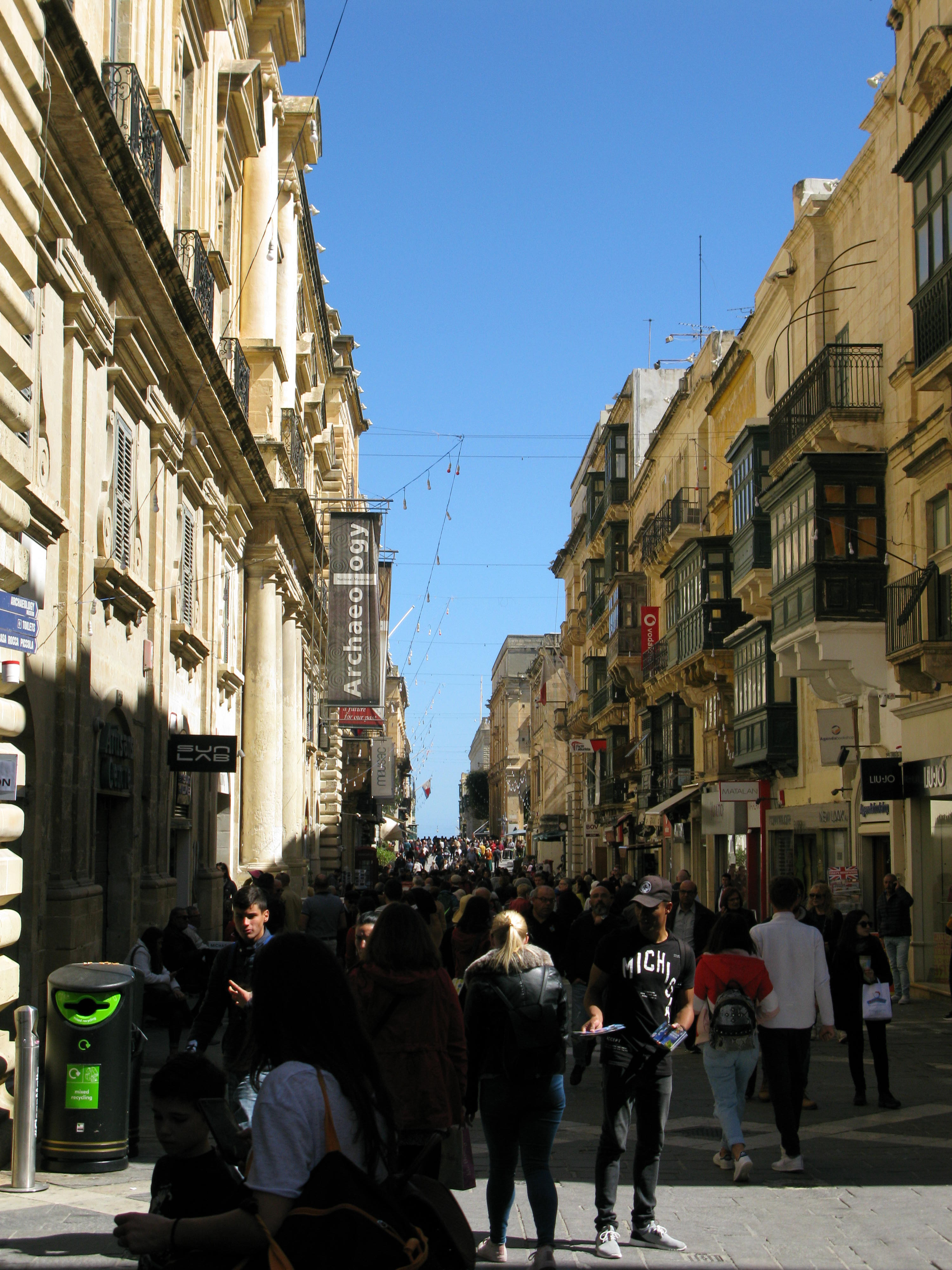
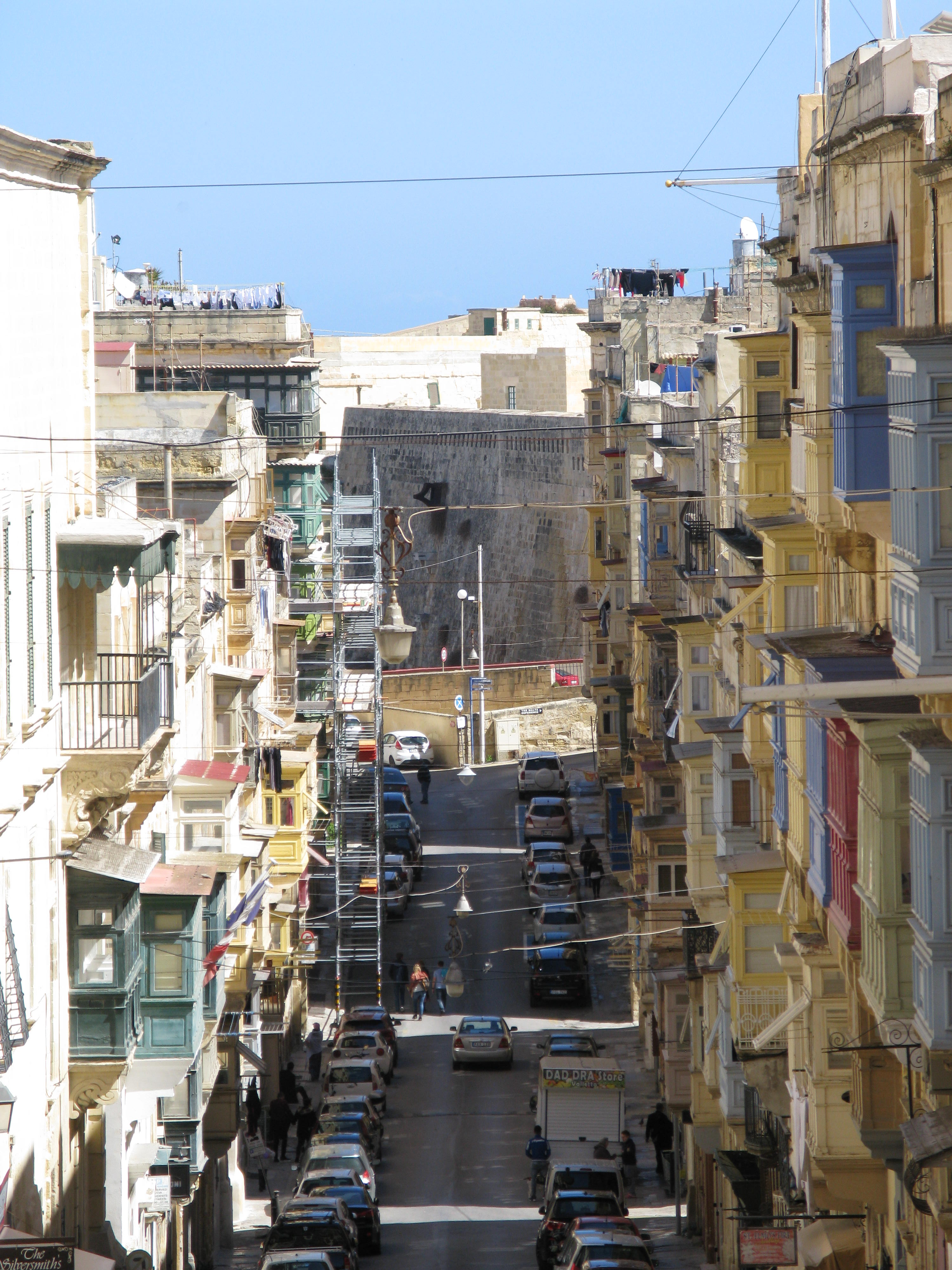

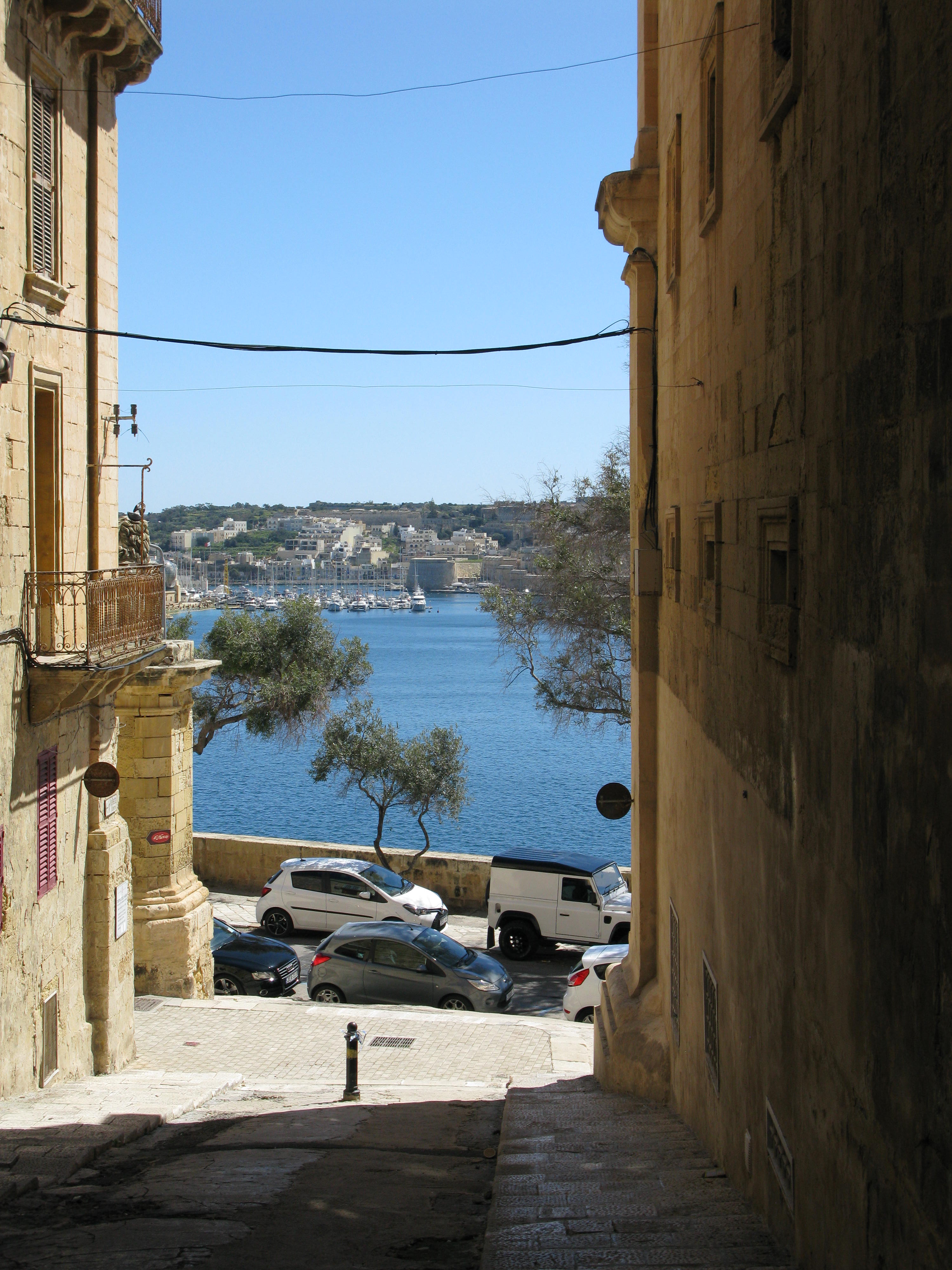
A short 25 minute drive away from Valletta you’ll find the ancient fortified city of Mdina which may look familiar to fans of the TV show Game of Thrones. This city provided the backdrop to a number of scenes in the early seasons of the hit HBO show. However, despite it’s rise in popularity – and rather fortunately for the heritage of Mdina – they have not gone over the top promoting that fact.
While Valletta combines the old with the new – there is plenty of history (especially Second World War history) in the capital – Mdina gives the feel of stepping into another time. The stone streets have a feel of years gone by; untouched by modern society.
We entered this stone city by the Mdina Gate. An archway dating back to the 1700s. Inside we spent the best part of a couple of hours searching the city’s winding streets, taking in the views and enjoying the tranquillity that this majestic place had to offer. Given that there were a number of other tourists in the city at the time, it somehow didn’t give the same feeling of overcrowded that can sometimes be the case in parts of Valletta.
There was plenty to see in the city, but make sure you spare the time to head over to St Paul’s Cathedral to take a look at the magnificent architecture on display.


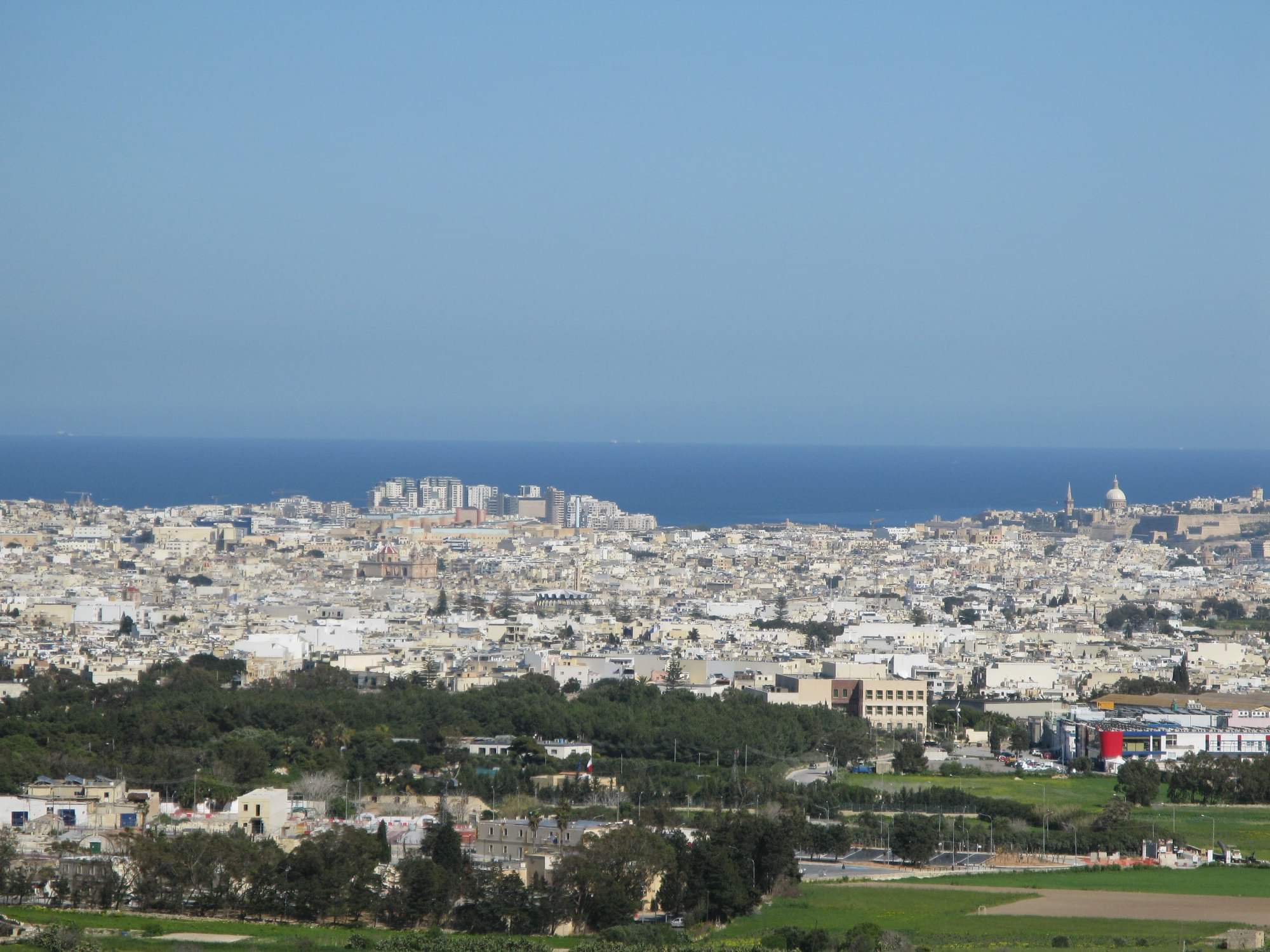
Another must see on the mainland of Malta is the Ħal Saflieni Hypogeum.
This a Neolithic subterranean structure – located in Paola – dates back to between 3,300 and 3,000 BC. It is often simply referred to as the Hypogeum, literally meaning underground in Greek. The Hypogeum is thought to have been a sanctuary and necropolis, with the remains of more than 7,000 individuals documented by archaeologists. It’s the only prehistoric burial site that is open to the public.
From memory, I believe that the Hypogeum was actually only found by accident. In 1902 workers cutting cisterns for a new housing development broke through its roof. The workers initially tried to hide the temple, but eventually it was found.
There are a few things that you should know about this particular site. Unlike other sites around Malta, only a certain number of visitors are allowed in at any one time (10 per tour) and across any particular day. That means, to guarantee a spot on one of the guided tours (you can’t go in on your own) you should book in advance of your trip to Malta and print off your own tickets (which cost 35 Euros per person).
The ticket price may sound steep, but it goes towards ensuring the environment is preserved to maintain this ancient structure. You also cannot take any photos inside, so this is one to just walk through and enjoy.
Inside you’ll walk through and see a variety of chambers including the room carved in stone, the Holy of Holies and the room decorated with original red ochre. It’s a truly incredible sight.
One of the great things about Malta is that you can always park your car nearby any major site. This one is no different and Holly and I literally pulled up and parked (for free) right in front of its main entrance. Although I should point out we were very early in the day so it may be a different story if you arrive later on. However saying that, if this find was anywhere else in the world you’d have to park miles away, pay a small fortune for it and then catch a bus!

And with that great parking space also provided an easy five minute walk east to the Tarxien Temples. Dating back to between 3,600 and 2,500 BC this site is another example of the Megalithic Temples of Malta.
Tarxien is housed below a huge tent-like tarpaulin and can be viewed from a series of walkways that take you around the entirety of the site. You cannot go into it yourself but the walkways do provide a great viewing platform to see everything from. There are also plenty of helpful information boards located around the walk, to tell you exactly what you are looking at.
A visit here took Holly and I around 45 minutes and, for six Euros each, was great value for money.



For those looking to move away from the serious history of Malta I can suggests nothing more fun to do than an escape room with the extremely enjoyable Can You Escape.
As I’ve mentioned in previous blogs, I love an escape room and my love of them has passed over now to Holly who has, potentially, even more of a competitive edge than I do.
So one evening in Malta we decided to add another country to the list of places we had played such a room.
There are three (soon to be four) escape room options currently available at Can You Escape. None of which are the game we played (we played a room called The Spaceship) which says to me that they like to keep their games fresh and new; always a good sign with this type of game.
The current selection are The Forbidden Castle, Emily’s Motel Room and Emily’s Motel Room (with an actor). There is also one called The Pub Escape which is temporarily unavailable at the time of writing.
Each game costs 20 Euros per person for teams of two or three people but can be played for as little as 16 Euros per person for a team of six or seven people.
So despite the room we played no longer being available I can safely say that Can You Escape put on a very good show. They provide an enthusiastic escape room experience and make the rooms challenging (it took us 58 minutes and 36 seconds to escape).
One thing to note is that it can be difficult to find them when you are driving. They are based in a red building (well it was red anyway when we visited) on a road called Triq il- Merhba in Il-Fgura which appears to be a rather dead, deserted street. You can park your car next to the falling-down walls on one side of the street and then walk along until you find their premises. There is a sign up to show you you’re in the right place. Then enter and enjoy.
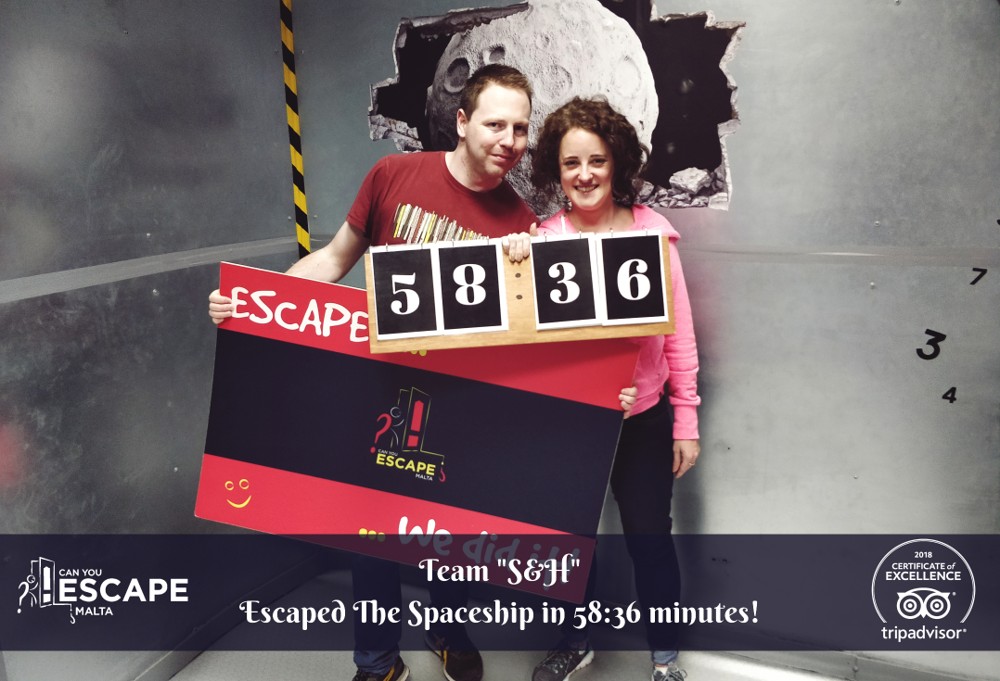
During any trip to Malta a visit to the island of Gozo is a must. This island has a population of around 40,000 people and makes for a great day-trip by car and ferry.
There is so much to see and do on Gozo, and Holly and I were keen to make the most of having the freedom to drive around the island on our own.
Gozo is a perfect blend of activities. There are little beach hideaways such as Wied il Ghasri – a small inlet on the north of the island – for a secluded stop-off and historical sites to appreciate as well.
A place to make a brief stop is the Basilica of Ta’ Pinu which can be seen almost from across the entire island. Holly, as you can see in the images below, certainly enjoyed checking out the statues in front of the church and giving them a thorough inspection.



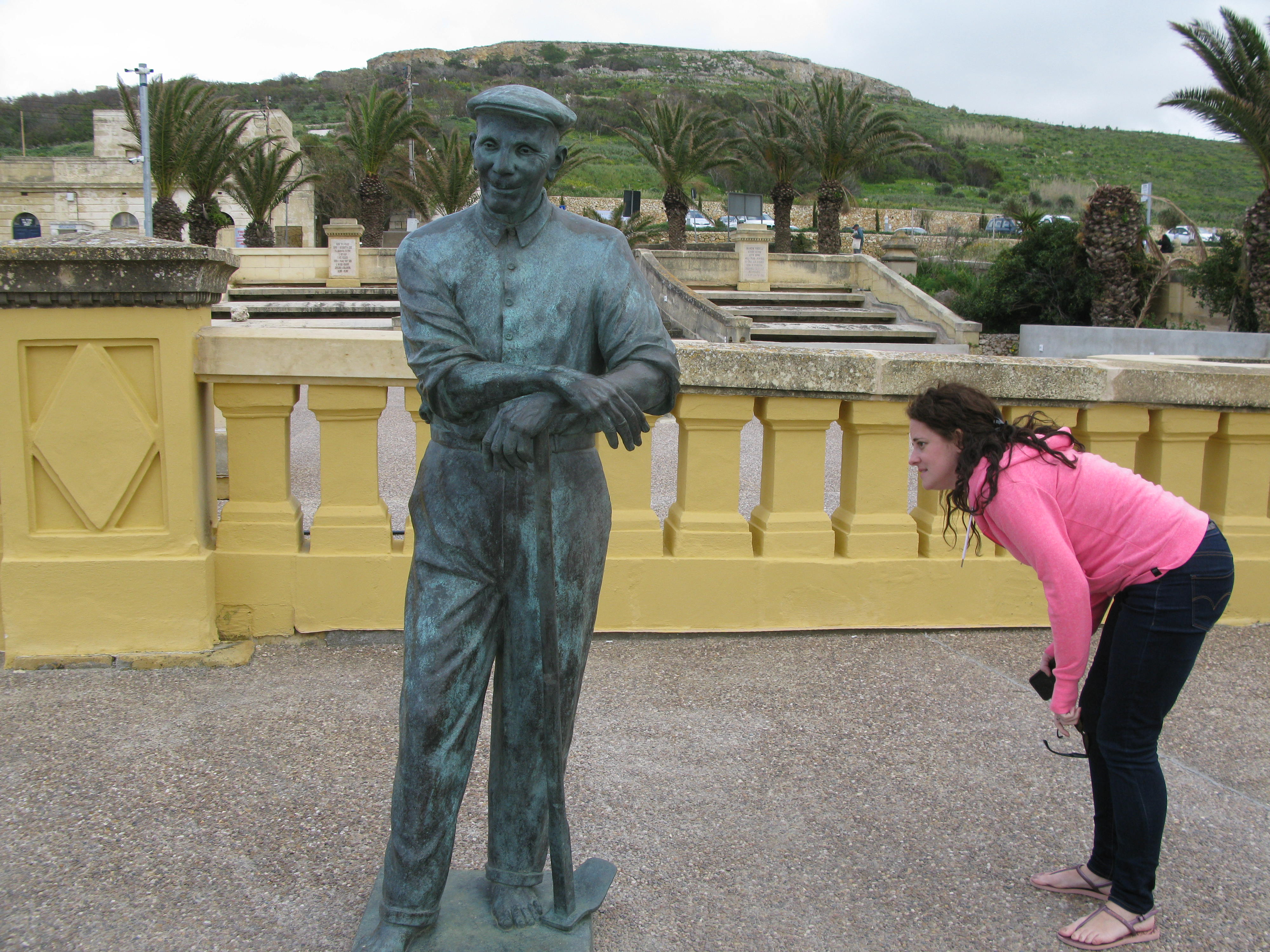
While the above places are worth a quick look, there are a number of sites on Gozo that cannot be missed. The first of these that Holly and I made our way to was the citadel of Victoria.
Victoria is the largest settlement on Gozo and the de-facto capital of the island. However, the Citadel (or Cittadella as it’s also known) – is the part that’s really worth visiting.
As is the case on mainland Malta, parking here is not an issue. We pulled up our car in a space on a side street and walked the short distance to the entrance of the Citadel.
Our visit actually coincided with a preparation for a festival of light. All around the city candles were being set up in various positions to be lit when darkness came. Sadly, our stay didn’t overlap the lighting of these candles, but it didn’t stop one hastily erected lighting unit almost hitting me when the wind came calling. Thankfully, I’m still quite quick on my feet and managed to get out of its way. Sadly, I couldn’t stop it from breaking when it hit the stone floor.
Away from lights throwing themselves at you, the citadel is a welcoming place. There is an impressive number of sites to see here including the Cathedral of the Assumption, the old prison and over 20 other churches!
As we made our way through the streets we worked our way to the highest points available. From these spots, we got a phenomenal view across, not only the entire Citadel, but also to the edge of Gozo. The island, after all, is quite flat so when you do get an elevated position, you can see a long way out.
Great thing here is that a walk around the Citadel is free so unless you plan to enter any of the main attractions you can keep your purse or wallet firmly in your pocket.

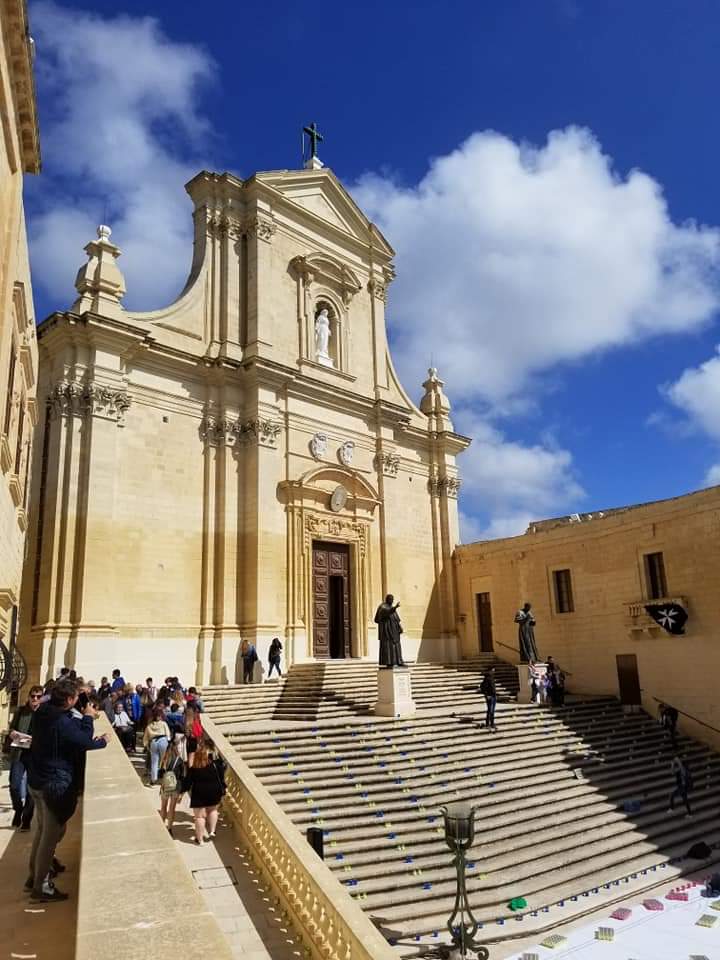

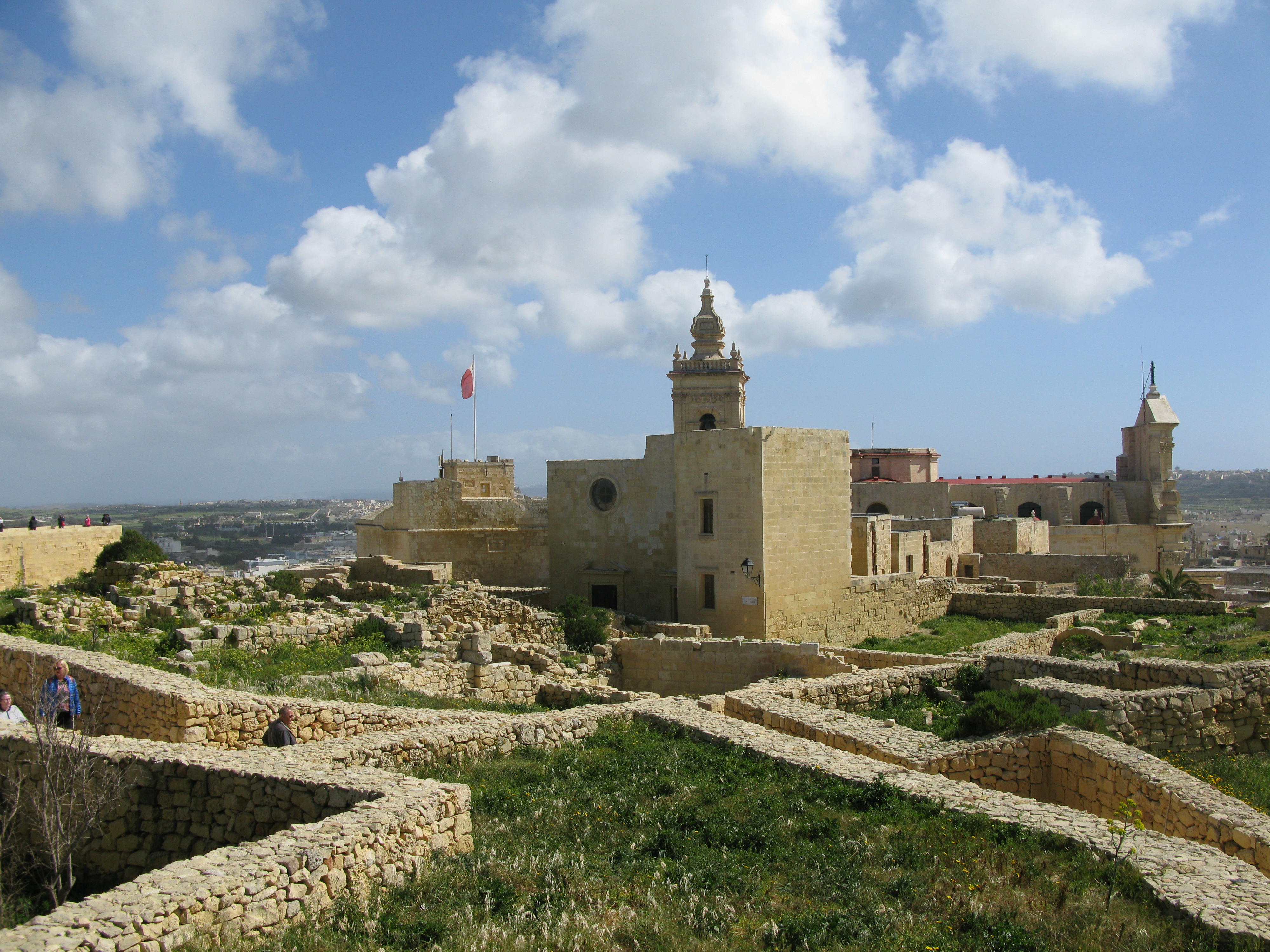
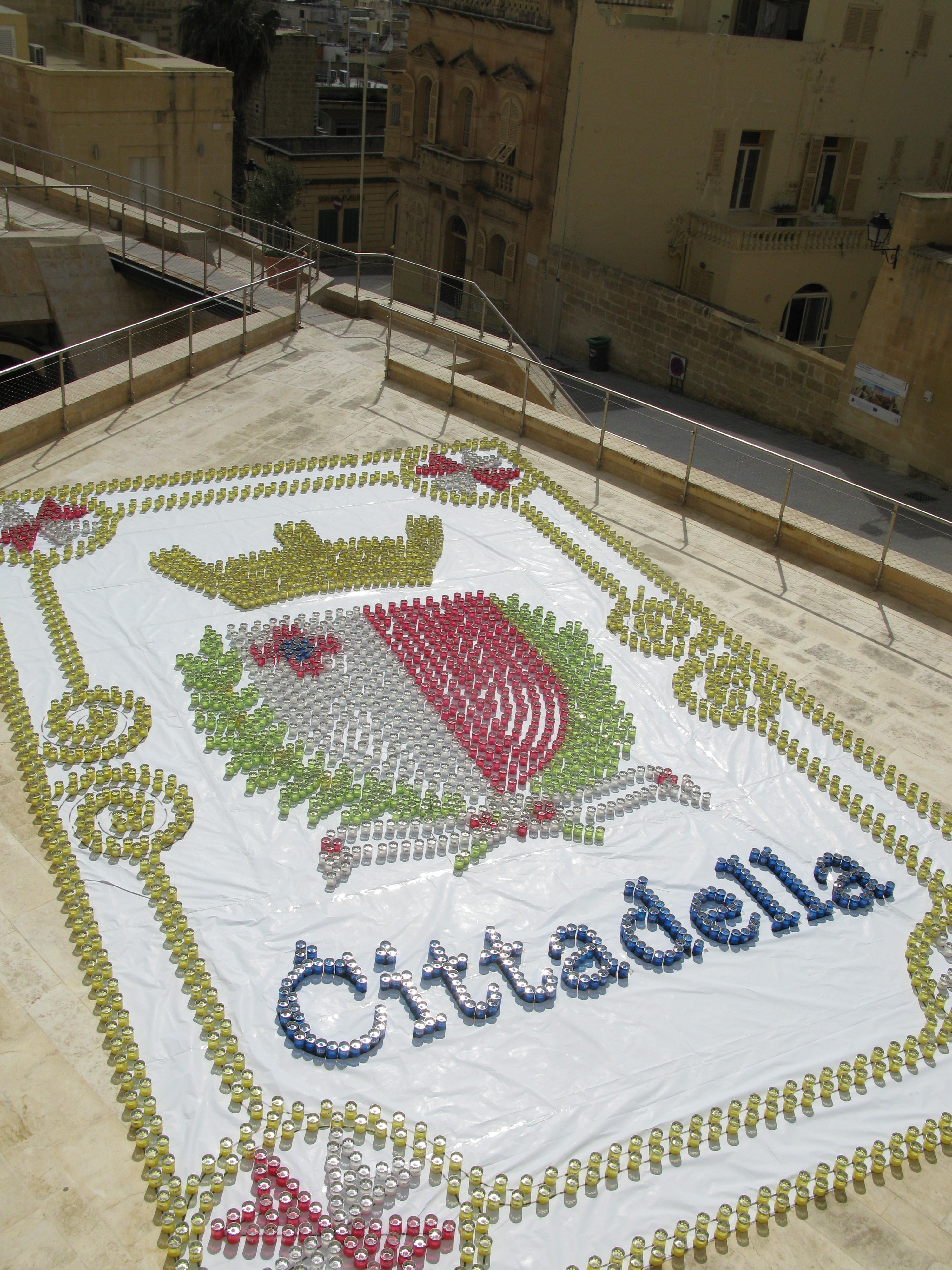

A five minute car journey east from Victoria took us to the Ggantija Megalithic Temples. The Ggantija Temples – another UNESCO World Heritage Site – are the earliest of the Megalithic Temples of Malta and are older than the pyramids of Egypt!
So while they may not have the size, nor the PR, of the Pyramids of Giza they do make for an excellent visit.
Parking up on the side of the road near the entrance to the Temples, we made our way to the ticket booth located inside a modern building. For 10 Euros per person you can get access to the Ggantija as well a the nearby Ta Kola Windmill (more on that one later on).
There are two main temples to see here and both date back to between 3,600 and 3,200 BC.
Seeing these ancient structures still standing is impressive. Smooth edges that may have once made up the sides have been eroded away over the years by centuries of exposure to the elements, but this does not detract from their magnificence.
A walk around these ruins took us, at a leisurely pace, about 45 minutes. Make sure you also spend a bit of time in the museum at the entrance as this has a lot of information available along with some really fascinating exhibits.

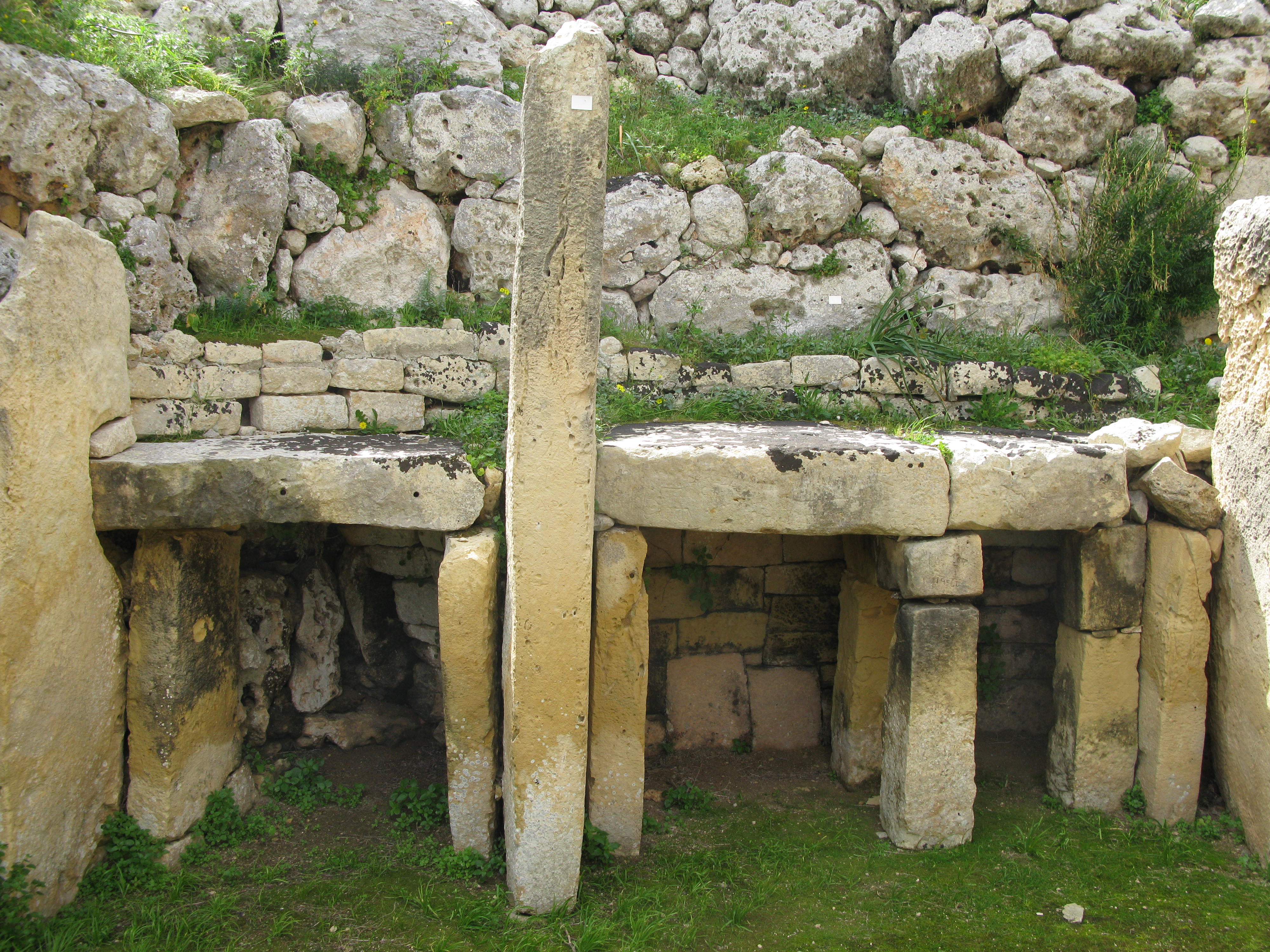
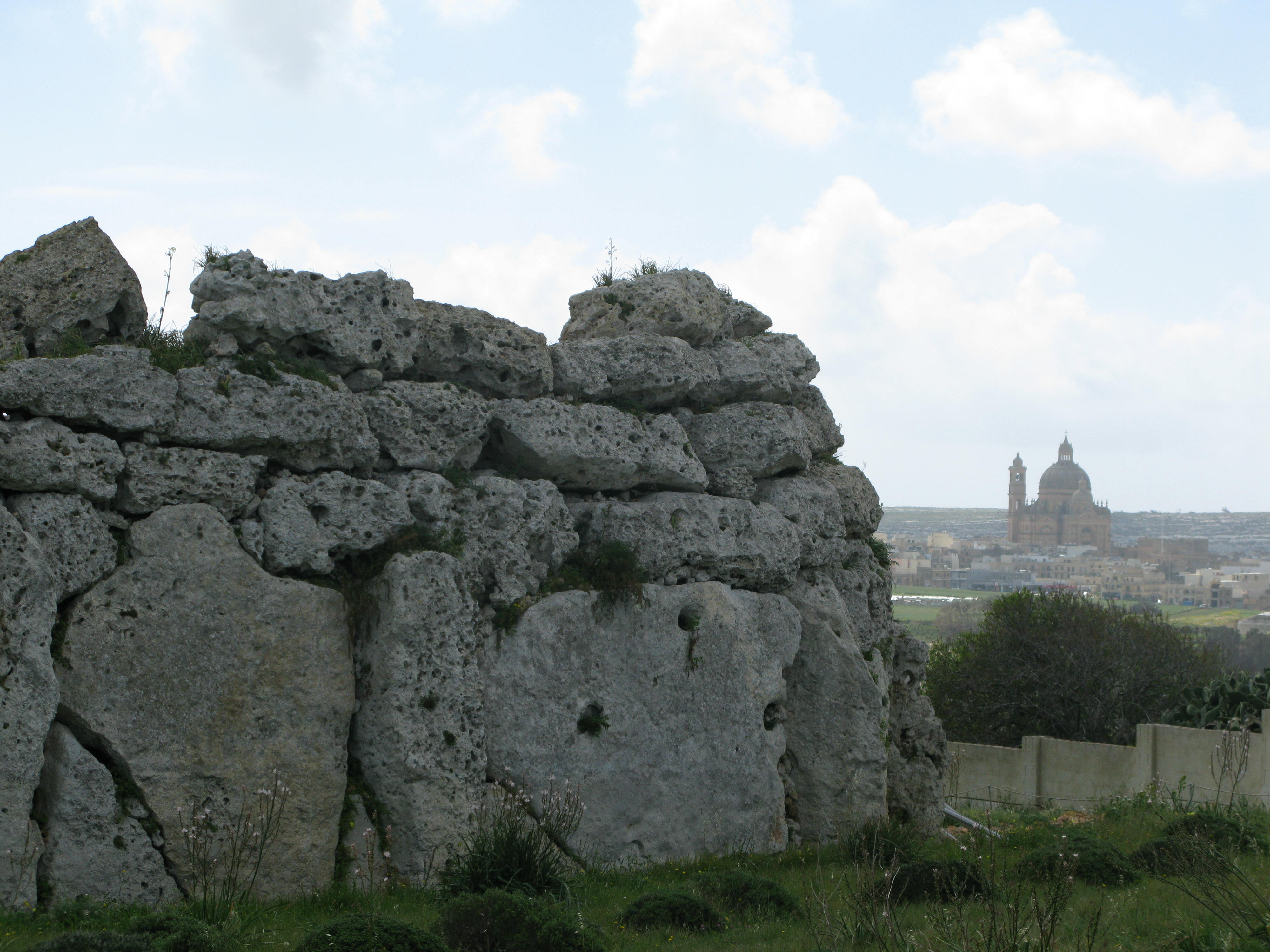
My final suggestion is a quick visit to the Xwejni Salt Pans. Located in the north of Gozo in the Zebbug district, hundreds of small pools have been developed alongside the coastline.
From the outside they look like hundreds of miniature sea pools but don’t go and try and sit in one. The locals won’t thank you for it.
This scenic spot is reserved for salt harvesting. As sea water gets trapped in the pools it then gets evaporated away leaving behind he valuable sea-salt for local traders to collect and sell.
It’s an impressive set-up they have that uses time-honoured techniques and, given the surroundings, it’s easy to spend time here just soaking in the sun.
There are a couple of rules you must observe though. The first is that you are not allowed in the pools. They are not for swimming in. The second is that you should not try and take any salt yourself. This is for the local people to make a living from so, if you want to try some, you should purchase it from one of the local shops nearby.

For a full list of admission fees for sites around Malta and Gozo you can visit Heritage Malta.
Where to avoid
It may seem harsh, but I only put the Azure Window – one of Gozo, and Malta in general’s, most famous sites – as a place to avoid as it simply isn’t there anymore!
The Azure Window was a 28m tall natural archway off the San Lawrenz coastline of Gozo. This archway used to see tourists flock to the area to look at, walk over and sail under it.
Due to its exposed position to both the sea and the wind, the Window suffered a long, slow process of erosion over the years. Between the 1980s and early 2000s large chunks of rock fell away from the arch, into the sea, making the Window more and more unstable.

The whole Window finally fell apart in March 2017, after a period of heavy storms inflicted the fatal blows to the unstable column holding the archway up. Once it fell, all parts of the archway disappeared under the water.
Nowadays, visitors can simply drive up to where the arch was and view, well, nothing other than the sea. It’s free to do, which is a bonus, but no longer can tourists witness what was perhaps once an impressive sight now reclaimed by nature.
My other suggestion to skip is the Ta Kola Windmill; also located on Gozo. This Windmill is found near Ggantija in Xaghra, and entry to it can be purchased as part of your ticket to the ancient site. This was the only reason Holly and I decided to pay it a visit. It was close and it was already paid for.
If you do want to miss the windmill entirely you can buy just a ticket for Ggantija for between 4.30pm and 5.30pm daily for six Euros per person. It costs an extra four Euros (so 10 Euros in total) for the combined Ggantija and Ta Kola Windmill ticket which gives you entry at any time that day during operational hours.
The windmill is pleasant enough. Built in the 1700s, it became a museum in 1992 having spent most of its life as a functioning mill. Inside the museum, the mill contains a number of traditional tools used for wood and iron-working.
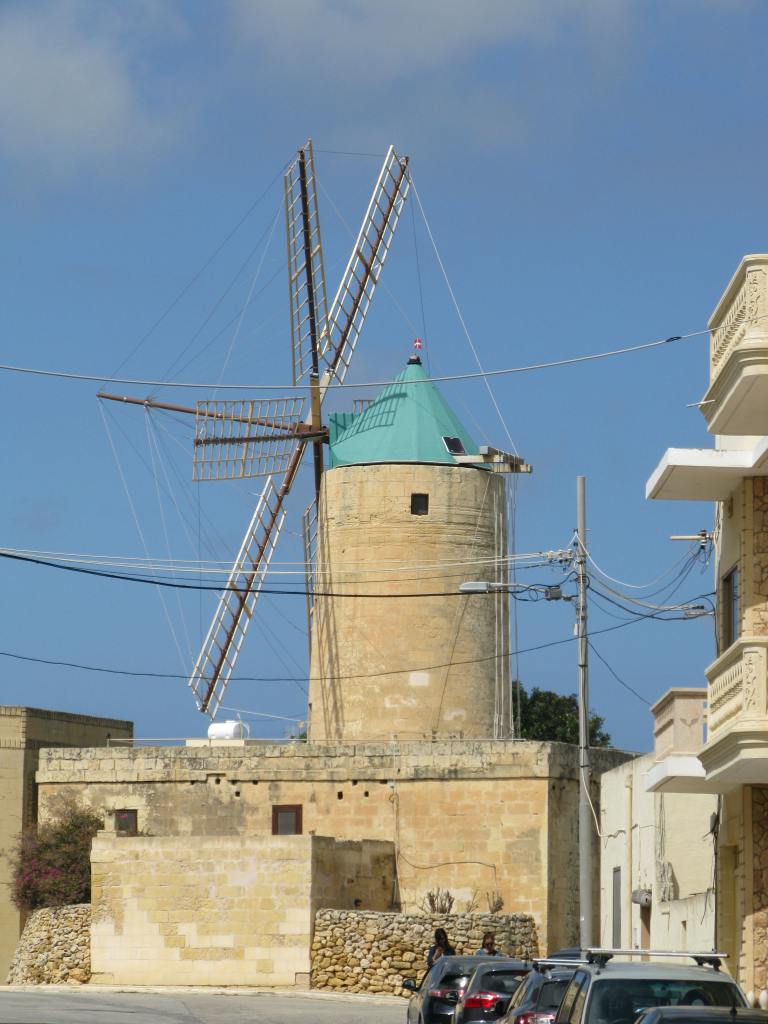
I’ll also give a passing mention to the Popeye Village on mainland Malta.
I can’t speak too much about this as Holly and I (neither of whom are massive Popeye fans) didn’t actually bother to go here, but that should sum it up for you.
Set-up as a sort of small theme park – having been the set of the 1980’s musical film starring Robin Williams as the title character – this really didn’t appeal to us at all.
Open all year round, the village at Anchor Bay, costs adults 15 Euros each to enter and children between nine and 12 Euros each. One to miss unless you happen to be a massive fan of the film. I’m sure you can count those people on the fingers of one hand.
Great places to eat
There are hundreds of good places to eat fresh Mediterranean cuisine on Malta, many of which can be purchased at an affordable price. During our stay on the island, Holly and I enjoyed taking the car out for the evening and trying food in the Marsaskala and Senglea regions of the country.
Our favourite stop though was in St. Paul’s Bay. Here, in the north of Malta near the Gozo Ferry Line terminal, you’ll find the beautiful Tarragon restaurant on the corner of the quiet Church Street overlooking the water.
The food here is stunning and Tarragon really does live by its own mantra that food is art. Tender meat and the freshest seafood will adorn your plate and you’ll enjoy experiences you’ll likely not have had before.
Let’s get it out the way early. This is not a cheap restaurant. Quality is very much paid for. For me, this was money well spent. A meal for two people, with wine, will set you back over 150 Euros. Possibly a bit more than that depending on what you order. Trust me, you’ll agree it was worth it at the end.


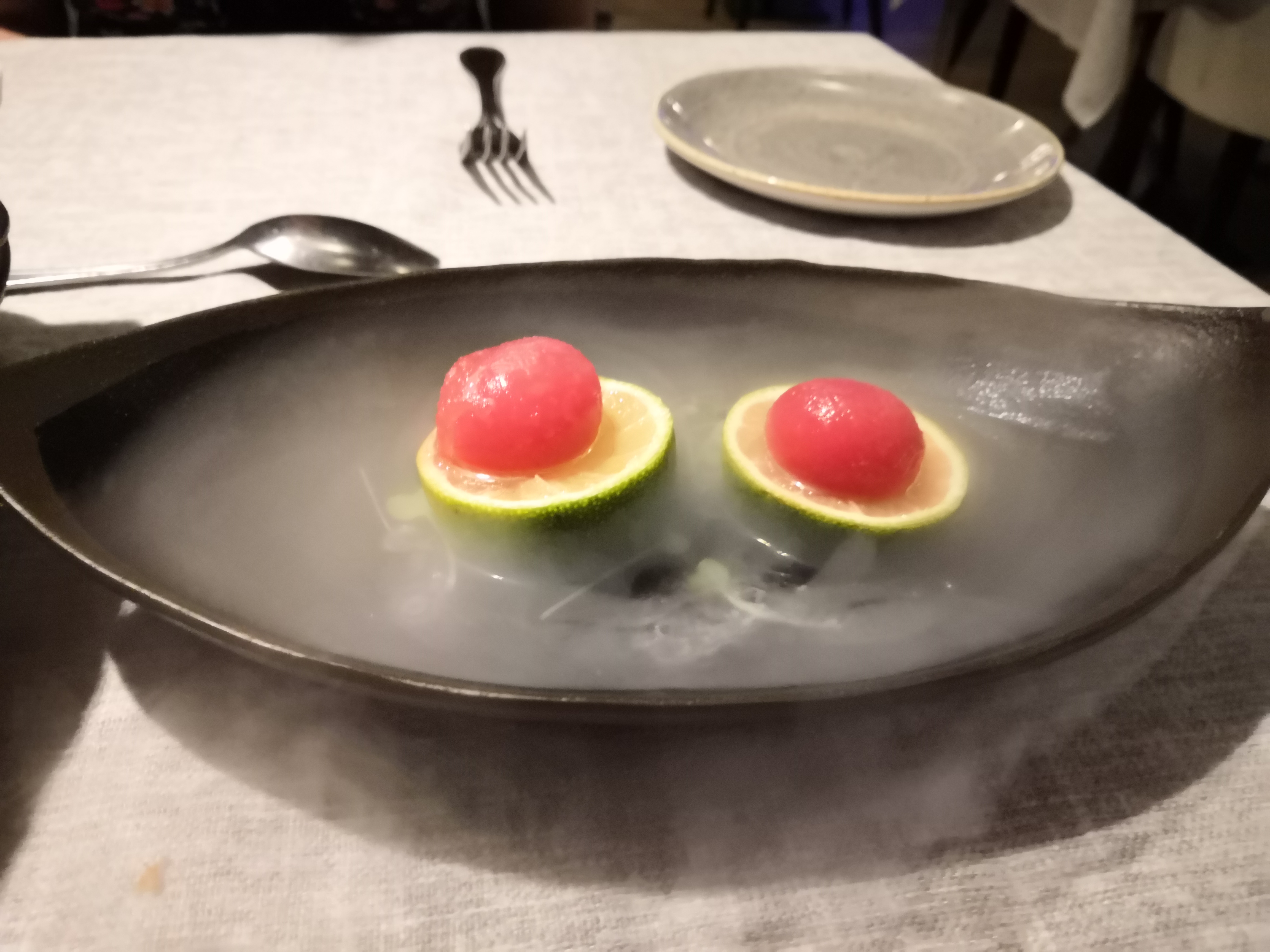


Currently, Tarragon appear to be offering three separate menus to choose from. Each menu has a range of courses (around five to seven courses total) that offer something slightly different to enjoy. A personal favourite was the Edible Molecular Spherification. No I didn’t know what it was either, and even after eating it, I wasn’t sure. What I do know is that it was delicious.
An almost liquid, globe with a fine outer shell sits on your spoon. Then, once you put it in your mouth it instantly pops like a bubble, giving you rainfall of flavour.
The fish is also expertly prepared in front of you. A whole fish came plated to our table and then cooked – flambé-style- in front of our eyes. The waiter then de-boned the fish with surgeons precision and plated up again before us to enjoy.
Once you’ve enjoyed your meal you’ll have the perfect setting to sit back, finish your drinks and watch the night sky shimmering over the waters of Malta.
Useful links
Remember you can follow World Complete on Twitter and Instagram and send your comments and pictures from your travels using #WorldComplete and #Travel.


Wow great post! Your photos are lovely too.
Lauren | https://www.laurenyloves.co.uk/
LikeLiked by 1 person
Thank you so much. Glad you enjoyed 👍
LikeLike
Love your video for the AirBnB… it looks gorgeous! Excellent photography too!! 😎
LikeLiked by 1 person
Thanks very much. Glas you enjoyed
LikeLiked by 1 person
really nice to read it, all the information is helpful.
LikeLiked by 2 people
Thank you. Glas you enjoyed it
LikeLike
Malta was never on my radar either but your comprehensive post
makes it so. Love Gozo, such a lovely place. Thanks so much for the
experiences..
LikeLiked by 1 person
Thank you for the kind comments. Glad you enjoyed the blog. Please take a view of the site and see some of my other posts too.
LikeLike
Great post! I’ve staying in Gozo but didn’t get much time to see Malta. I’ve now realised how much I missed there… and suppose I’ll need to go back!
LikeLiked by 1 person
Always good to find a reason to return somewhere you love. I can’t wait to return to Malta some day (hopefully soon)
LikeLike
Malta is on my list of places to visit as I would love to walk its ancient walls and discover its history. It is so near to the UK that I should have been there already!
LikeLiked by 2 people
What a very detailed and a wonderful guide! Malta seems to have so much history to learn about and so many places to explore! Thanks for sharing
LikeLiked by 1 person
Many thanks for the kind comments. I’ll make sure to drop by your blog also to have a look at your work. Please feel free to have a look over some of my other blogs too to see if they are of interest.
LikeLike
I went to Malta years ago but never made it to Gozo unfortunately so I hope to get back there someday. Your AirBnB looks fantastic – I don’t think I’d want to leave!
LikeLiked by 1 person
It’s easily the best AirBnB I’ve ever stayed in. Think it is going to be really hard to beat that one!
LikeLike
Wow, what a detailed post. Sounds like you had a great time? March seems like a good time to go. We went years ago in August and it was too hot for much sightseeing!
LikeLiked by 1 person
Great post! I only visited Malta (Valletta) for one day on a cruise stop. It was wonderful but I can see that I missed out on a lot!
LikeLiked by 1 person
Thanks Lannie for he kind words.You must return to Malta and spend time on the island. It’s such a great place to stay
LikeLike
So far I’ve “only” looked at your fabulous images from Malta but I haven’t read all the text yet. It is much to read and I will take the time to read what you write as soon as I feel that I have the time. For me it’ is very interesting to find out how those who do not live here experience Malta. I’m from Sweden but moved here 20 years ago but now I, my dog and my husband I have decided to leave and move on, either to Spain or Cyprus. Much has changed during all these years and not everything to the better…
I like you to know that ever since you informed about your site, I have had it lying open in my computer waiting to be read, and I will read it for sure and probably also add some comments. Thanks for sharing and take care.
Greeting from sunny Malta
LikeLiked by 1 person
Hi. Thanks do much for taking the time to write. All comments welcome and really hope you find World Complete of both interest and help.
LikeLiked by 1 person
pictures are beautiful, but looks like oversize, any how nice write up
LikeLiked by 1 person
Wow, sounds like there’s a lot to do in Malta! I’ve never been there but it seems like a cool place to be! Nice post!
LikeLiked by 1 person
Such a beautiful place.. lovely pictures and a great detailed article… thanks for sharing this!
LikeLiked by 1 person
Thanks so much for stopping by. Glad you enjoyed the piece.
LikeLike
Looks gorgeous – especially your accommodation!! Somewhere else to add to my never ending list!
LikeLiked by 1 person
Thanks for the comment and for stopping by. Yeah the accommodation was very special.
LikeLiked by 2 people
Thank you so much for the virtual tour! Bookmarked! Malta is also on my list, we have several flights from Cyprus.
LikeLike
Great post! And great photos. You’ve backed up my suspicion that it is always cloudy on Gozo… Had a nice swell on the boat over for the trip I took there. I loved the food as well – and I’m a vegetarian! Your photos reminded me of that specific mix of Malta heartiness with the lightness of the Mediterranean ingredients. Ah! Would love to go back someday!
LikeLiked by 1 person